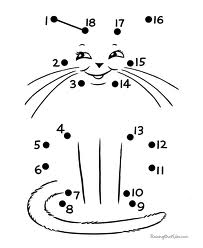This week’s eSourcing Wiki-Wednesday topic is Sourcing Success Enablers. Under the Organizational Best Practices heading is a brief paragraph that gets to the heart of what all procurement and supply management departments need to stay focused on:
“As part of a supply chain focus, successful companies do not overlook indirect categories. Chances are some categories (such as office equipment, professional services, etc.) consume a significant part of the total organizational spend and will also benefit from a review. Strategically source everything. (Often strategic sourcing means outsourcing procurement of non-critical, low value spend, or commodity categories to external organizations that also follow strategic sourcing principles.)”
 We all think we know what strategic sourcing means: a 6, 8, maybe 10 step process that starts with an analysis of current contracts and spend, competitively and systematically bids out the business, and then makes an award that results in new contracts and various benefits for the business. Strategic sourcing has been a process for so long, that it has perhaps become constrained by diagrams and lost its original intent. The process that was once supposed to be a guide has become a tactical checklist. In order to keep the ‘strategic’ in our sourcing, we should consider a broader definition of the phrase. As defined in Wikipedia:
We all think we know what strategic sourcing means: a 6, 8, maybe 10 step process that starts with an analysis of current contracts and spend, competitively and systematically bids out the business, and then makes an award that results in new contracts and various benefits for the business. Strategic sourcing has been a process for so long, that it has perhaps become constrained by diagrams and lost its original intent. The process that was once supposed to be a guide has become a tactical checklist. In order to keep the ‘strategic’ in our sourcing, we should consider a broader definition of the phrase. As defined in Wikipedia:
“Strategic sourcing is an institutional procurement process that continuously improves and re-evaluates the purchasing activities of a company. In a production environment, it is often considered one component of supply chain management.”
Redefining the Process
Once a broader definition has set the process free, the activities and solution types that may be employed broaden as well, and along with them the potential for value creation. Since you can’t have consistency or governance without some kind of standard process, I suggest the following for each category/product/service being sourced:
Step 1: Pull historical contracts and perform an analysis of spend
Step 2: Starting with incumbent suppliers (if there are any) look at what solutions the market has to offer
Step 3: Look at the costs associated with the spend, whether directly or indirectly related
Step 4: STOP AND THINK.
Once you understand the role this spend plays in your company’s operations, what alternatives or technological advances are available, and how the costs break down you are prepared to develop your strategy. Too often I think we start with build v. buy, and the move on to RFP v. RFQ or reverse auction v. traditional negotiation. Sourcing this way is like the ‘connect the dots’ games many of us played growing up. You connect the dots in order by number, and not until you had connected them all in the correct order would the image or solution to the puzzle appear.
The strategic sourcing process is not meant to lead the ‘player’ to a surprise conclusion. (It’s a cat!) But rather to bring consistency to workflow and results. We should know what the picture is going to be before we are done. Better yet, we should decide what the picture should be based on the circumstances and arrange the dots ourselves.
True Strategic Sourcing
The real purpose of strategic sourcing is to assess the organization’s need and fill it with the best solution possible. Best may mean most efficient, most cost effective, most innovative, or lowest risk. The optimal approach may not take you through your eSourcing system or beyond step 4 of the process, but if you reach the right end, you will have fulfilled the spirit of the process more than by following it by the letter.
There are a number of other options that should be considered and eliminated one by one for each category:
 Renegotiating with the incumbent supplier(s)
Renegotiating with the incumbent supplier(s)- Combining with another contract already in place (such as pairing a service with a materials provider)
- Outsourcing to a managed service provider
- Putting a spot buy program in place rather than a contract
- Offshoring/nearshoring
- Eliminating the spend or reducing functionality
- Standardizing specifications
- Replacing the spend with a completely different means of reaching the same end
- Working with an appropriate GPO to increase leverage
- Adding products to an eProcurement system if one is in place
- Allocating spend for diversity or sustainable suppliers
So the next time you start a sourcing project, remember that the process does not exist for its own sake, and is not meant to be followed regardless of the circumstances. This is one case where coloring outside the lines should be rewarded!
 Renegotiating with the incumbent supplier(s)
Renegotiating with the incumbent supplier(s)